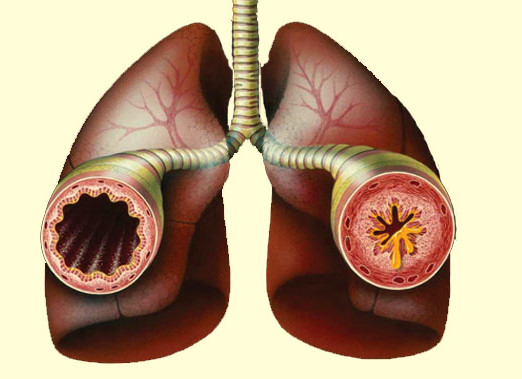Reactive airway disease (RAD) refers to a reversible narrowing of the airways. It is not a diagnosis but is more of a term used before your doctor could make a specific diagnosis. With this disease, you may develop respiratory symptoms once you're exposed to an irritant that causes inflammation in your respiratory tract. The disease most commonly affects children, but it can occur in adults too.

Causes of Reactive Airway Disease
The causes of RAD are not clear, but a number of factors, including genetics, environment and biology may have a role to play here. You experience RAD symptoms because your airways become extremely sensitive to certain triggers. The most common triggers for the RAD include weather changes, pollens, trees, cigarette smoke, mold, dust and strong odors. Some people may also react to stress, emotion, pets and too much physical activity. These triggers lead to inflammation and tighten up your muscles around the airway. The lining of the airways may also swell and produce mucus, which leads to the narrowing of the airways.
Symptoms of Reactive Airway Disease
Once you've developed reactive airway disease, you may experience certain symptoms as soon as you're being exposed to the triggers that are mentioned above. The most common symptoms include the following:
1. Wheezing
A high-pitched whistling sound is the most common symptom and you can hear it when you breathe out. In children, wheezing may appear and disappear until the children turn to the age of three. After that age, wheezing may no longer be present. You may sometimes notice wheezing when your child has a virus or is around a trigger such as pet hair.
2. Trouble Breathing
With wheezing, you may also experience trouble breathing. Children usually complain about chest tightness with nostrils that flare out when trying to breathe. You may also notice their stomach muscles move in deeply when they breathe. Shorter, faster breaths are more evident in this case.
3. Cough
If you have developed reactive airway disease, you're more likely to deal with cough as well. For children with RAD, they may also experience cough that won't go away.
4. Fast Heartbeat
You may notice your heart racing when you've been exposed to a trigger. Your child may complain the same and you can actually feel their heart beating faster.
5. Runny Nose
A runny nose is another symptom of RAD and is the outcome of irritation and inflammation in your airways that make your cells to produce excess mucus.
Differences Between Asthma and Reactive Airway Disease
Many people think that asthma and reactive airway disease is the same thing, but that's not the case. Due to the symptoms that have been described above, it is common to think that you are suffering from chronic obstructive pulmonary disease, asthma or viral upper respiratory infections. However, the symptoms associated with RAD are somewhat different as compared to asthma. The biggest difference is that there is no diagnostic criteria used for RAD and the symptoms won't go away with asthma drugs. Moreover, people with RAD are usually less sensitive to environmental pollutants as compared to asthmatics.
Treating Reactive Airway Disease
You can try a number of treatment options to improve your condition. Here are a few suggestions.
1. Short-Active Bronchodilator
Your healthcare provider may give you short-active bronchodilators to help open up the clogged airways. These medications are highly effective and help relieve sudden symptoms such as trouble breathing.
2. Long-Active Bronchodilators
Unlike short-active bronchodilators, these medicines take some time to produce results. Your doctor may use these medications to prevent breathing problems in the future. It is important not to try long-active bronchodilators for severe symptoms, such as trouble breathing.
3. Corticosteroids
These medicines are used to reduce swelling in your airways, which in turn allows air to go to your lungs. You can take it in the form of a pill or breathe it in for relief. Be sure to continue using these medicines until your doctor asks you to stop.
4. Steroids
Steroids such as prednisolone, prednisone and dexamethasone may help reduce the airway swelling, thus relieve the symptoms of reactive airway disease. You need to take them as a pill, liquid or injective to reduce your body's white blood cell overreaction to an irritant.
5. Oxygen
Your healthcare provider may put you on oxygen for a while to make breathing easier. They will use a mask or a nasal cannula to give you oxygen. Don't take it off without your doctor’s permission.
When to See a Doctor
There are a number of situations when you should seek immediate medical attention. Go see your doctor if you or your children experience the following symptoms:
- Shortness of breath or wheezing even after taking medications
- An oral temperature that's above 38.9 °C
- Chest pain, muscle aches or thickening of sputum
- Change of sputum color from clear to white, yellow or bloody
- A rash, swelling and itching
You should seek medical attention immediately if you or your children experience the following symptoms:
- Wheezing doesn't stop after medicine and coughing persists.
- Find it extremely difficult to breathe.
- Ribs stick out while breathing.
- Pass out, behave strangely or have blue lips.
